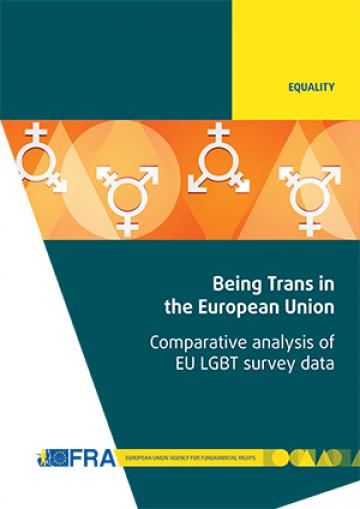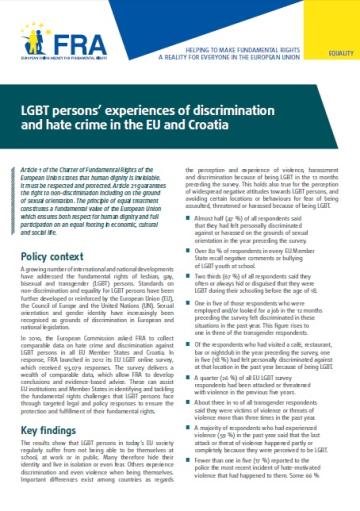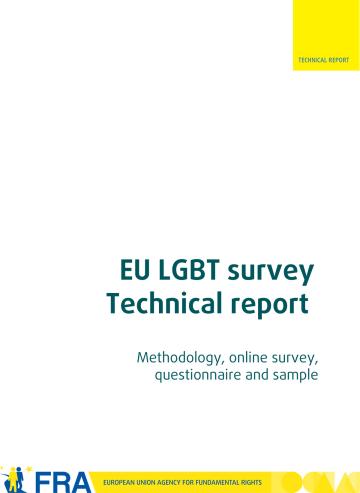
Being Trans in the EU - Comparative analysis of the EU LGBT survey data
The European Union Agency for Fundamental Rights (FRA) has published two related survey reports: EU LGBT survey – European Union lesbian gay, bisexual and transgender survey – Results at a glance (2013) and the EU LGBT survey – European Union lesbian, gay, bisexual and transgender survey. Main results (2014). In this current analysis, FRA found that, with few exceptions, trans respondents indicate the highest levels of discrimination, harassment and violence amongst LGBT subgroups.
Equal and full social participation of all without discrimination is a precondition for inclusive and cohesive societies. In this regard, the survey results depict a disturbing reality. They show that the equality of trans persons is, as yet, a hard-to-reach goal. Still, this report comes at a time when a growing number of EU Member States are taking steps to promote and protect the fundamental rights of trans persons. The evidence collected and analysed from this survey should serve politicians and policy makers as they strive to craft legislation, policies and strategies that better safeguard those rights.



